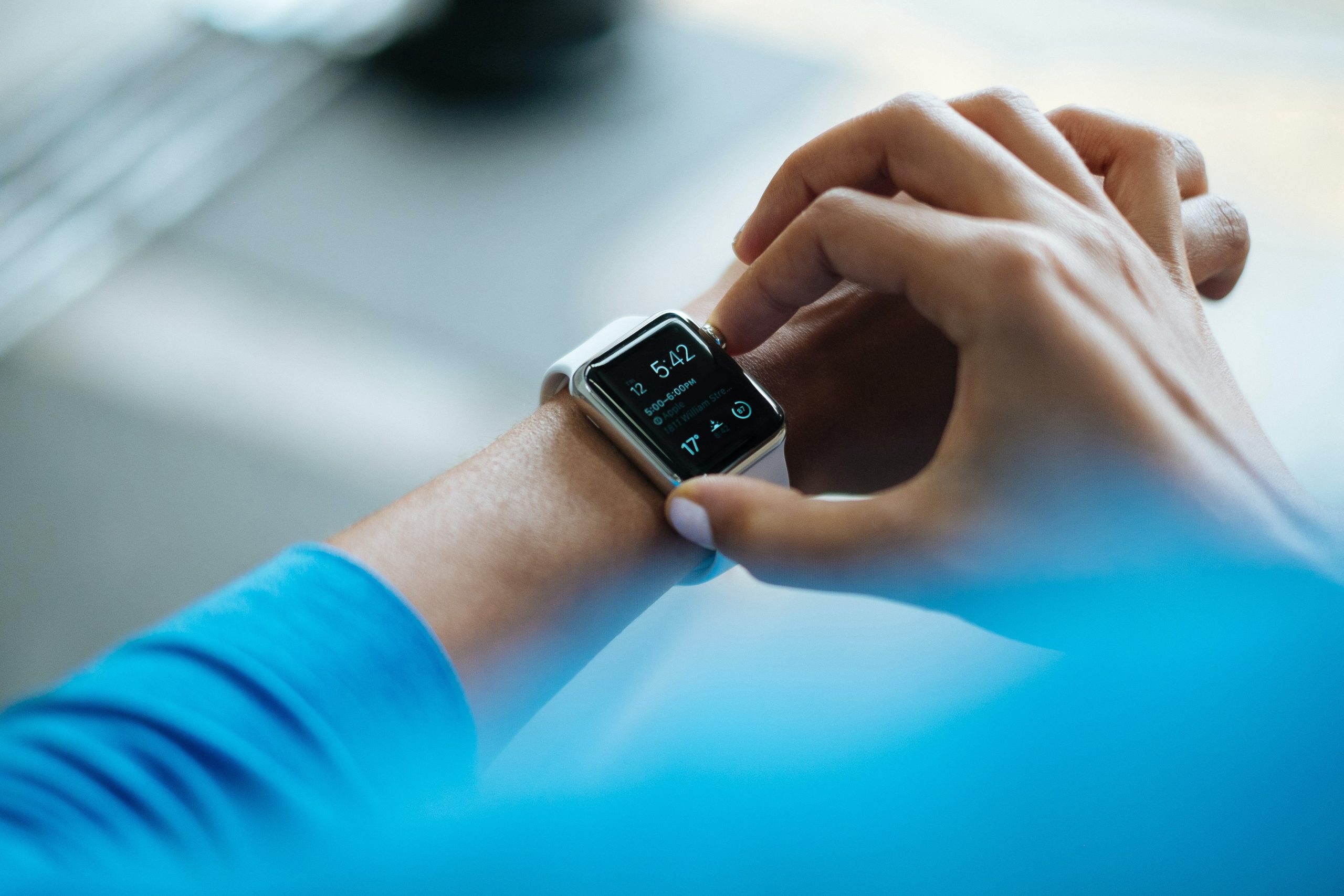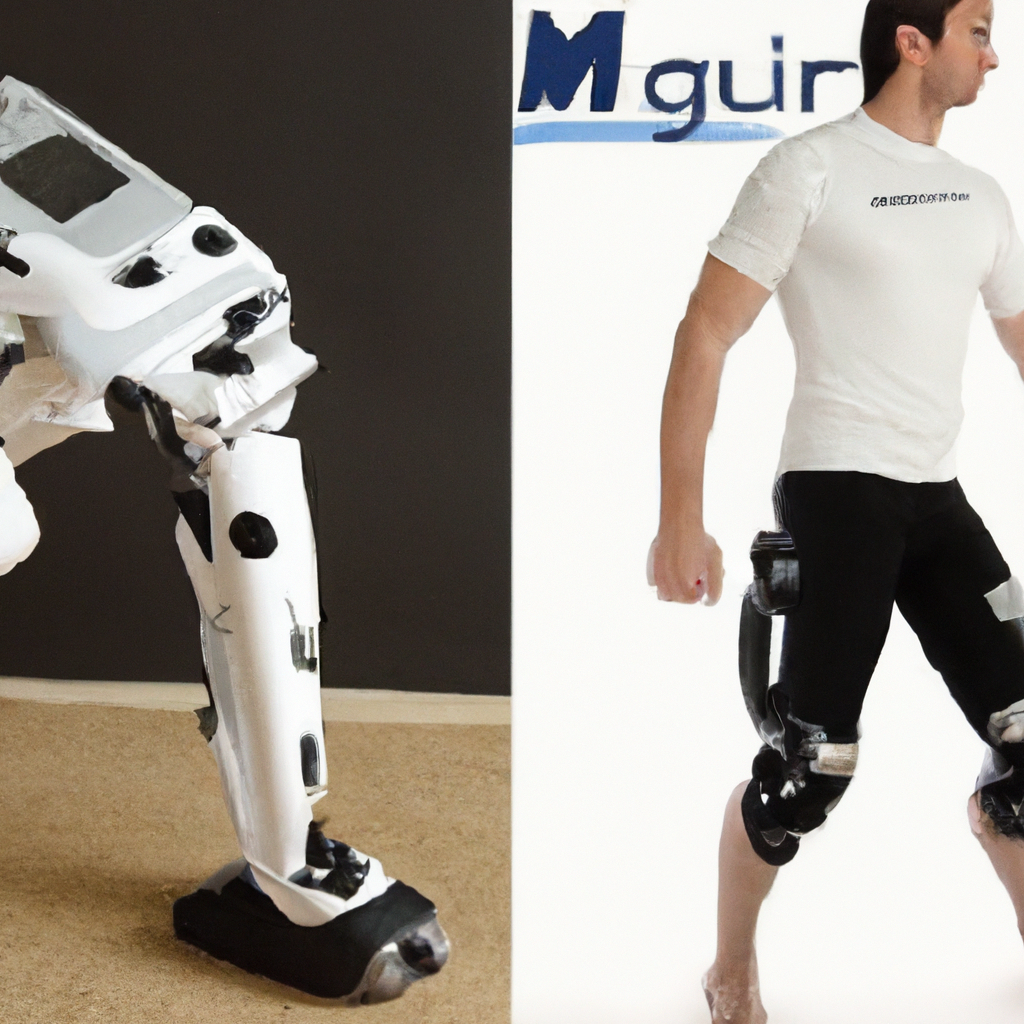In today’s ever-evolving world, the integration of advanced technology has become a fundamental aspect of modern-day workplaces. Amongst the cutting-edge innovations is the development and utilization of exoskeletons, which boast the ability to enhance human abilities. These wearable robotic devices are revolutionizing industries, from manufacturing to healthcare, by augmenting strength, mobility, and overall workforce productivity. By providing individuals with extra muscle power and support, exoskeletons are reshaping the way we work, ensuring a safer and more efficient work environment. Discover how these remarkable contraptions are transforming the workplace and empowering individuals to accomplish tasks that were once deemed impossible.

1. Introduction
Exoskeletons have emerged as a groundbreaking technology that has the potential to revolutionize the way we work. These wearable robotic devices offer numerous benefits, allowing individuals to enhance their physical capabilities and perform tasks more effectively and safely. In this article, we will delve into the world of exoskeleton technology, exploring its definition, the importance of enhancing human abilities, and the purpose of this article.
1.1 Definition of Exoskeletons
Exoskeletons, also known as exosuits, are mechanical structures designed to be worn by individuals to augment their physical abilities. These wearable devices are typically attached to the body and provide external support to aid in movement and reduce physical strain. Exoskeletons often incorporate advanced technologies such as sensors, motors, and actuators to enhance human capabilities.
1.2 Importance of Enhancing Human Abilities
Enhancing human abilities is crucial for multiple reasons. Firstly, it allows individuals to perform tasks that might otherwise be beyond their physical capacity, enabling them to engage in more demanding or strenuous activities. Secondly, enhancing human abilities through exoskeleton technology can reduce the risk of injuries and physical strain, promoting long-term health and well-being. Lastly, it improves productivity and efficiency, leading to better overall outcomes in various industries.
1.3 Purpose of the Article
The purpose of this article is to provide an in-depth understanding of the benefits, types, applications, safety considerations, cost and return on investment, challenges and limitations, future outlook, and real-world case studies related to exoskeletons in the workplace. By exploring these aspects, we aim to shed light on the potential of exoskeleton technology to enhance human abilities and transform the future of work.
2. Benefits of Exoskeletons in the Workplace
Exoskeleton technology offers a wide range of benefits in the workplace, positively impacting both workers and businesses alike. Let’s explore some of the key advantages in detail.
2.1 Reducing Physical Strain and Injury Risks
One of the primary advantages of exoskeletons is their ability to reduce physical strain and minimize the risk of injuries. By providing external support and assistance, these devices can help workers perform physically demanding tasks, such as lifting heavy objects, without overexerting themselves. This not only prevents immediate injuries but also reduces the likelihood of long-term musculoskeletal issues.
2.2 Increasing Productivity and Efficiency
Exoskeletons have shown significant potential in increasing productivity and efficiency in the workplace. By augmenting human strength and endurance, workers can perform tasks more quickly and efficiently, leading to improved overall productivity. Additionally, exoskeletons can enhance worker stamina, reducing fatigue and allowing for sustained high-performance levels throughout the workday.
2.3 Enhancing Endurance and Strength
Exoskeleton technology enables individuals to enhance their endurance and strength, unlocking new possibilities in physically demanding fields. Whether it’s a construction worker lifting heavy materials or a healthcare professional supporting a patient, exoskeletons provide an extra boost to the wearer’s capabilities, allowing them to perform tasks that would otherwise be challenging or exhausting.
2.4 Supporting Workers with Disabilities
Exoskeletons have the potential to empower individuals with disabilities to overcome physical limitations and engage in various work activities. By providing external support and assistance, exoskeleton devices can enable individuals with mobility impairments or injuries to participate in the workforce, promoting inclusivity and diversity.
2.5 Providing Assistance in Repetitive Tasks
Repetitive or monotonous tasks can often lead to physical strain and musculoskeletal disorders. Exoskeletons can alleviate the burden associated with these tasks by providing support and reducing strain on the body. By doing so, workers can perform repetitive tasks with reduced risk of injury and increased comfort, leading to higher job satisfaction and improved overall well-being.
2.6 Improving Work Quality and Precision
Exoskeletons not only enhance physical capabilities but also contribute to improved work quality and precision. By stabilizing movements and providing precise control, these devices enable workers to perform tasks with greater accuracy. In fields such as manufacturing or surgery, where precision is crucial, exoskeletons can significantly enhance the quality and reliability of work outcomes.
3. Types of Exoskeletons
Exoskeleton technology encompasses various types of devices that cater to different needs and requirements. Let’s explore the different types of exoskeletons in detail.
3.1 External Exoskeletons
External exoskeletons are mechanical structures worn outside the body, typically consisting of rigid frames and actuators. These devices provide external support and enhance human strength and endurance. External exoskeletons are commonly used in industries such as construction, manufacturing, and logistics, where physical strength and endurance are essential.
3.2 Powered Exoskeletons
Powered exoskeletons, also known as active exoskeletons, incorporate electric motors or hydraulic systems to assist the wearer’s movements actively. These devices amplify the wearer’s strength and provide additional power, making them suitable for tasks requiring heavy lifting or prolonged physical exertion. Powered exoskeletons find applications in industries such as construction, warehouse operations, and healthcare.
3.3 Hydraulic Exoskeletons
Hydraulic exoskeletons use hydraulic systems to provide support and assistance to the wearer. These devices leverage fluid pressure to enable movements and enhance strength. Hydraulic exoskeletons are known for their high load-bearing capacity and are often utilized in industries where heavy loads need to be lifted or transported, such as construction and manufacturing.
3.4 Passive Exoskeletons
Passive exoskeletons, unlike their powered counterparts, do not incorporate motors or actuators. They rely on mechanical principles and design to provide passive support and assistance. Passive exoskeletons are lightweight and typically serve as ergonomic aids, maintaining proper posture and reducing strain in tasks involving repetitive movements. They find applications in industries such as assembly lines and healthcare.
3.5 Soft Exosuits
Soft exosuits, also known as textile exoskeletons, employ flexible and wearable fabrics to provide support and assistance. These devices are lightweight and comfortable, making them suitable for tasks involving complex movements and fine motor skills. Soft exosuits have found applications in healthcare, rehabilitation, and sports, where flexibility and mobility are critical.
4. Exoskeleton Applications in Different Industries
Exoskeleton technology has gained recognition across various industries for its potential to improve worker performance and well-being. Let’s explore the applications of exoskeletons in different sectors.
4.1 Manufacturing and Assembly Lines
In the manufacturing industry, exoskeletons have shown significant potential in enhancing worker performance and reducing physical strain. These devices can assist workers in performing repetitive tasks, such as lifting heavy objects or maintaining specific postures for extended periods. By reducing fatigue and preventing injuries, exoskeletons help optimize productivity and create a safer working environment.
4.2 Construction and Heavy Lifting
Construction and heavy lifting operations often require significant physical strength and endurance. Exoskeletons provide the necessary support and assistance to workers, allowing them to lift and carry heavy loads with reduced effort. By mitigating the risk of back injuries and fatigue, exoskeletons enable workers to perform their tasks more efficiently and safely, increasing overall productivity in the construction industry.
4.3 Warehousing and Logistics
In the warehousing and logistics sector, exoskeletons play a crucial role in improving efficiency and reducing physical strain. These devices assist workers in repetitive tasks such as picking and packing, enabling them to move and lift goods more easily and with reduced risk of injuries. By streamlining operations and minimizing physical exertion, exoskeletons enhance overall productivity in the logistics industry.
4.4 Healthcare and Rehabilitation
Exoskeleton technology holds immense potential in the healthcare and rehabilitation fields. These devices can aid individuals with mobility impairments or injuries in regaining their independence and engaging in daily activities. Exoskeletons assist patients in walking and performing therapeutic movements, promoting rehabilitation and improving their quality of life. Additionally, exoskeletons can support healthcare professionals in tasks related to patient lifting and transfer, reducing the risk of injuries for both patients and caregivers.
4.5 Military and Defense
The military and defense industries have embraced exoskeleton technology for its applications in enhancing soldier performance and reducing physical strain. Exoskeletons provide soldiers with increased endurance, strength, and load-carrying capacity, enabling them to perform demanding tasks more effectively. Furthermore, exoskeletons can reduce the risk of injuries and enhance survivability, making them valuable assets in military operations.

5. Safety Considerations and Regulations
While exoskeleton technology offers numerous benefits, ensuring safety and adherence to regulations is of paramount importance. Let’s explore some key safety considerations and regulations associated with exoskeletons in the workplace.
5.1 Ergonomic Design and Fit
Exoskeletons should be designed with ergonomic principles in mind to ensure optimal support and comfort for the wearer. Poorly designed or ill-fitting exoskeletons can lead to discomfort, restriction of movement, or even pose additional risks. Manufacturers and employers must prioritize ergonomic design and customization to cater to individual needs and ensure maximum safety and effectiveness.
5.2 Training and Familiarization
Proper training and familiarization with exoskeleton operation and maintenance are essential for both wearers and supervisors. Workers should receive comprehensive training on how to operate, wear, and maintain exoskeleton devices safely. Employers should provide resources and guidance to ensure workers are proficient in utilizing exoskeletons correctly, reducing the risk of accidents or misuse.
5.3 Maintenance and Inspection
Regular maintenance and inspection of exoskeleton devices are crucial to ensure their safe and optimal functioning. Manufacturers should provide guidelines and recommendations for maintenance procedures, including inspection of mechanical components, sensors, and power sources. Regular checks and maintenance routines minimize the risk of malfunctions and ensure the longevity and safety of exoskeletons.
5.4 Compliance with Occupational Safety Guidelines
Exoskeletons in the workplace must adhere to relevant occupational safety guidelines to safeguard worker well-being. Employers should assess and evaluate the usage of exoskeletons in accordance with existing regulations, ensuring compliance with ergonomic standards, load-bearing capacities, and safety requirements. Complying with safety guidelines helps prevent workplace injuries and ensures a safe working environment.
5.5 Legal and Ethical Implications
The implementation of exoskeletons in the workplace raises legal and ethical considerations that need to be addressed. Employers must navigate issues related to worker privacy, consent, and data protection. Additionally, regulations regarding workers’ rights, disability inclusion, and discrimination should be considered when integrating exoskeleton technology. A comprehensive understanding of legal and ethical implications ensures responsible and ethical use of exoskeletons in the workplace.
6. Cost and Return on Investment (ROI)
Implementing exoskeleton technology in the workplace involves costs, but it also offers a potential return on investment. Let’s explore the cost-effectiveness and financial implications of exoskeleton adoption.
6.1 Initial Investment and Purchase Considerations
The initial investment required for exoskeleton implementation varies depending on factors such as device type, customization, and quantity. Employers should consider multiple factors when purchasing exoskeletons, including upfront costs, maintenance requirements, training expenses, and long-term support. Conducting thorough cost comparisons and evaluating different exoskeleton options allow employers to make informed decisions and optimize their investment.
6.2 Long-Term Cost-Effectiveness
While exoskeletons incur initial costs, they can lead to long-term cost-effectiveness. By reducing the risk of injuries and associated healthcare costs, exoskeletons contribute to a healthier workforce and lower expenditure on worker compensation claims. Additionally, increased productivity and efficiency resulting from exoskeleton implementation can lead to greater profits and financial gains, offsetting the initial investment.
6.3 Impact on Workers’ Compensation Claims
Exoskeleton technology has the potential to reduce workers’ compensation claims, thus lowering costs for employers. By mitigating the risk of injuries and providing a safer work environment, exoskeletons contribute to a decrease in workplace accidents and associated compensation claims. As a result, companies can save significant amounts of money typically spent on healthcare expenses and compensating injured employees.
6.4 ROI Analysis and Case Studies
Analyzing return on investment (ROI) is essential when considering exoskeleton implementation. Numerous case studies demonstrate the financial benefits and positive ROI associated with exoskeleton adoption. Companies that have successfully integrated exoskeleton technology report improvements in productivity, reduced worker injuries, and lower workers’ compensation costs. Conducting ROI analyses and examining real-world case studies provide valuable insights into the financial viability of implementing exoskeletons.

7. Challenges and Limitations
While exoskeleton technology offers immense potential, it also faces challenges and limitations that need to be addressed. Let’s explore some key challenges associated with exoskeletons in the workplace.
7.1 Physical and Cognitive Limitations
Exoskeleton technology may not be suitable for individuals with certain physical or cognitive limitations. Factors such as underlying medical conditions, physical restrictions, or cognitive impairments can impact the feasibility and usability of exoskeleton devices. Ensuring that exoskeletons cater to a diverse range of users and accommodate various needs will be crucial for their successful integration.
7.2 Adaptation and Learning Curve
Individuals using exoskeletons may experience an adaptation period and a learning curve. Becoming proficient in operating exoskeleton devices and mastering movements while wearing them can take time. Employers should allocate resources for training and support to minimize the impact of a learning curve, ensuring a smooth transition to exoskeleton-assisted work.
7.3 Workplace Ergonomics and Compatibility
Exoskeletons should be designed to align with workplace ergonomics and compatibility requirements. Factors such as spatial constraints, task-specific considerations, and the need for other personal protective equipment (PPE) may affect the usability and effectiveness of exoskeleton devices. Manufacturers and employers must collaborate to ensure that exoskeletons seamlessly integrate into existing work environments.
7.4 Battery Life and Power Limitations
Exoskeleton devices often rely on battery-powered systems, which may have limitations regarding battery life and power capacity. Extended work shifts or prolonged use of exoskeletons may necessitate frequent battery replacements or recharging, impacting productivity. Innovations in battery technology and power management systems are necessary to address these limitations and maximize the usability of exoskeleton devices.
7.5 Technological Advancements and Evolution
Exoskeleton technology is a rapidly evolving field, with continuous advancements and improvements. Employers should stay informed about the latest developments to ensure they are benefiting from the most up-to-date features and capabilities of exoskeleton devices. Regular evaluation and reassessment of exoskeleton options allow employers to leverage the latest technologies and advancements for improved worker performance and safety.
8. Future Outlook and Research
Exoskeleton technology holds immense potential for the future of work. Ongoing research and development efforts are shaping the evolution of exoskeletons. Let’s explore some key areas of research and development that offer promising advancements.
8.1 Developing Lighter and More Flexible Exoskeletons
Advancements in materials science and engineering are driving the development of lighter and more flexible exoskeletons. These innovations aim to improve wearer comfort, promote natural movements, and enhance overall user experience. Lighter and more flexible exoskeletons have the potential to further expand the applications of exoskeleton technology across various industries, promoting greater adoption.
8.2 Integration of Exoskeletons with Artificial Intelligence
The integration of exoskeletons with artificial intelligence (AI) opens up new possibilities for enhanced performance and real-time responsiveness. AI algorithms can analyze data collected by exoskeleton sensors, enabling the devices to adapt to the wearer’s movements and optimize support. This integration can contribute to personalized and adaptive exoskeleton technology, maximizing individual abilities and safety.
8.3 Advances in Material Science for Improved Performance
Continuous advancements in material science are paving the way for exoskeletons with improved performance characteristics. Stronger, lighter, and more robust materials are being developed, enhancing the load-bearing capacity, durability, and overall effectiveness of exoskeleton devices. These advancements enable exoskeletons to withstand harsh working conditions and provide reliable support for more demanding tasks.
8.4 Collaborative Efforts between Industry and Academia
Collaborative efforts between industry and academia are vital for advancing exoskeleton technology. Through partnerships and research collaborations, experts from different fields can pool their knowledge and resources, fostering innovation and driving progress. These collaborations facilitate the exploration of new ideas, the exchange of expertise, and the development of practical solutions that benefit the workforce and society as a whole.
8.5 Ethical Considerations in Exoskeleton Development
As exoskeleton technology continues to advance, it is essential to consider the ethical implications associated with its development and use. Ethical considerations include issues related to privacy, data security, consent, and equitable access to exoskeleton technology. Proactive discussions and clear ethical frameworks are necessary to guide the responsible development and deployment of exoskeletons in the workplace.

9. Case Studies
Real-world case studies provide insights into the practical impacts of exoskeleton implementation in different industries. Let’s explore some notable case studies that highlight the benefits and outcomes of adopting exoskeleton technology.
9.1 Company A’s Successful Implementation
Company A, a manufacturing firm, successfully implemented exoskeletons in their assembly line. Workers reported reduced fatigue, improved productivity, and decreased instances of physical strain and injuries. The adoption of exoskeletons resulted in higher job satisfaction and increased overall efficiency, leading to a significant return on investment for the company.
9.2 Improved Productivity at Company B
Company B, a logistics company, experienced remarkable improvements in productivity after introducing exoskeletons to their warehouse operations. The devices allowed workers to lift and transport heavy loads with reduced effort, enabling them to complete tasks more quickly and efficiently. With the implementation of exoskeletons, Company B achieved higher throughput and minimized workplace injuries.
9.3 Positive Impact on Worker Well-being at Company C
Company C, a healthcare facility, integrated exoskeletons in their patient lifting and transfer procedures. The use of exoskeletons significantly reduced the physical strain on healthcare professionals, preventing injuries and promoting worker well-being. The devices also improved patient comfort and safety during transfers, contributing to a better overall experience for both patients and caregivers.
9.4 Enhancing Performance in Company D’s Assembly Line
Company D, an automotive manufacturer, implemented exoskeletons to enhance worker performance in their assembly line. The devices provided support and assistance during repetitive tasks, reducing physical strain and increasing precision. Workers reported improved work quality and reduced errors, resulting in higher customer satisfaction and improved overall assembly line efficiency.
10. Conclusion
Exoskeleton technology has emerged as a transformative force in the workplace, enhancing human abilities and revolutionizing the way we work. Through its ability to reduce physical strain, increase productivity, enhance endurance, support workers with disabilities, and improve work quality, exoskeletons have proven to be valuable assets in various industries. The different types of exoskeletons cater to unique needs, while ongoing developments and research offer exciting future prospects. With proper attention to safety considerations, awareness of cost-effectiveness, and addressing challenges and limitations, exoskeleton technology can shape the future of work, improving worker performance, well-being, and the overall success of businesses.













